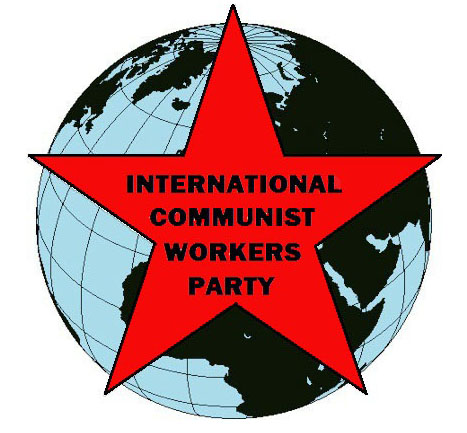
 |
FIGHT FOR COMMUNISM! |
International Communist Workers Party | |
Communism will change many things that we usually take for granted. Here’s a big one: how children learn to become adults.
Schools organized into age-segregated classrooms first appeared in the United States in Quincy, Massachusetts, in the 1840s. It was a period of rapid capitalist industrialization there. But this assembly-line model of schooling really took off when assembly lines began to dominate manufacturing.
Schools as we know them treat children like objects that are passed along a conveyor belt. At each stop (grade) a worker (the teacher) adds some new component (curriculum). The final product is supposed to be an adult worker who meets the “specs” of capitalists ready to exploit him or her.
Communism will end the tyranny of the conveyor belt over production workers and the tyranny of age-segregated schools over children.
Children, like older people, are human beings first, last and completely. In communist society they, like everyone else, will participate in making decisions about their lives. Young children will mainly learn through self-directed mixed-age play.
Adults will help them learn what they want to learn. We will all encourage each other to learn and do new thingsthroughout our lives. Especially we will learn different kinds of work and the knowledge that goes with them.
How Children Learned in Classless Hunter-Gatherer Societies
All people were hunter-gatherers for tens of thousands of years before the rise of class society. We have no direct evidence of how children learned to become adults then. But some geographically isolated hunter-gatherer societies survived into the second half of the 20th century before imperialism destroyed their way of life.
We call these societies “pre-class communism” because people worked, shared, played and made decisions together without money or bosses. In all such cultures, children spent most of their time playing and exploring in mixed-age groups.
Sometimes we mistakenly think that they didn’t have much to learn. But they did!
Future gatherers had to learn a lot about what plants were edible, where and when they grew, how to separate the edible parts and sometimes how to process them. They had to learn to make baskets and other tools.
Future hunters needed to learn about hundreds of species of animals, their habits and how to track them. They, too, had to learn to make tools and become skilled at using them.
Hunter-gatherer children also had to learn the geography and weather patterns of the large territories they occupied. As adults they would need to build shelter, make fires and cook, avoid predators, treat illnesses, deliver babies and care for infants. Equally important, children had to learn to build group solidarity through stories, music, dance and ritual.
They didn’t learn this in “school.” They learned mainly through self-directed play and exploration. They observed adult activities, imitated them, incorporated them into play. Adults might offer a bit of help when children wanted it.
Children began gradually to contribute to actual production when they felt ready and willing. “From each according to commitment and ability….” After all, kids want to grow up! Play turned into work, but work retained a playful spirit even into adulthood.
How Will Children Learn in Scientific Communist Society?
The world today is more complicated and interconnected than it was 10,000 years ago. We don’t live in isolated small groups, and we don’t expect to live that way in a communist world. Collectively we know a lot more – too much for everyone to become competent at everything.
So the ways in which children will learn to become adults will be both different and similar to pre-class communism. For small children, they will probably be mainly similar.
Instead of highly-structured schools, children will mainly learn through their own mixed-age play. They will watch and imitate adults, and gradually begin to work alongside them. They will learn to read and write in much the same way. Older people will always be available to help and encourage them.
There is a qualitative difference between being a “child” and being an “adult” but all people have so much in common! As we envision our communist future and fight for it, let’s think about what we’ll all learn and how. Let’s imagine and fight for a world in which learning and working, work and play, will be united for all.
Read more about hunter-gatherer children: Peter Gray, Freedom to Learn (blog posts)